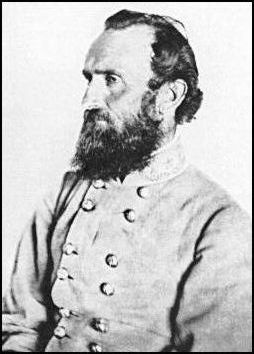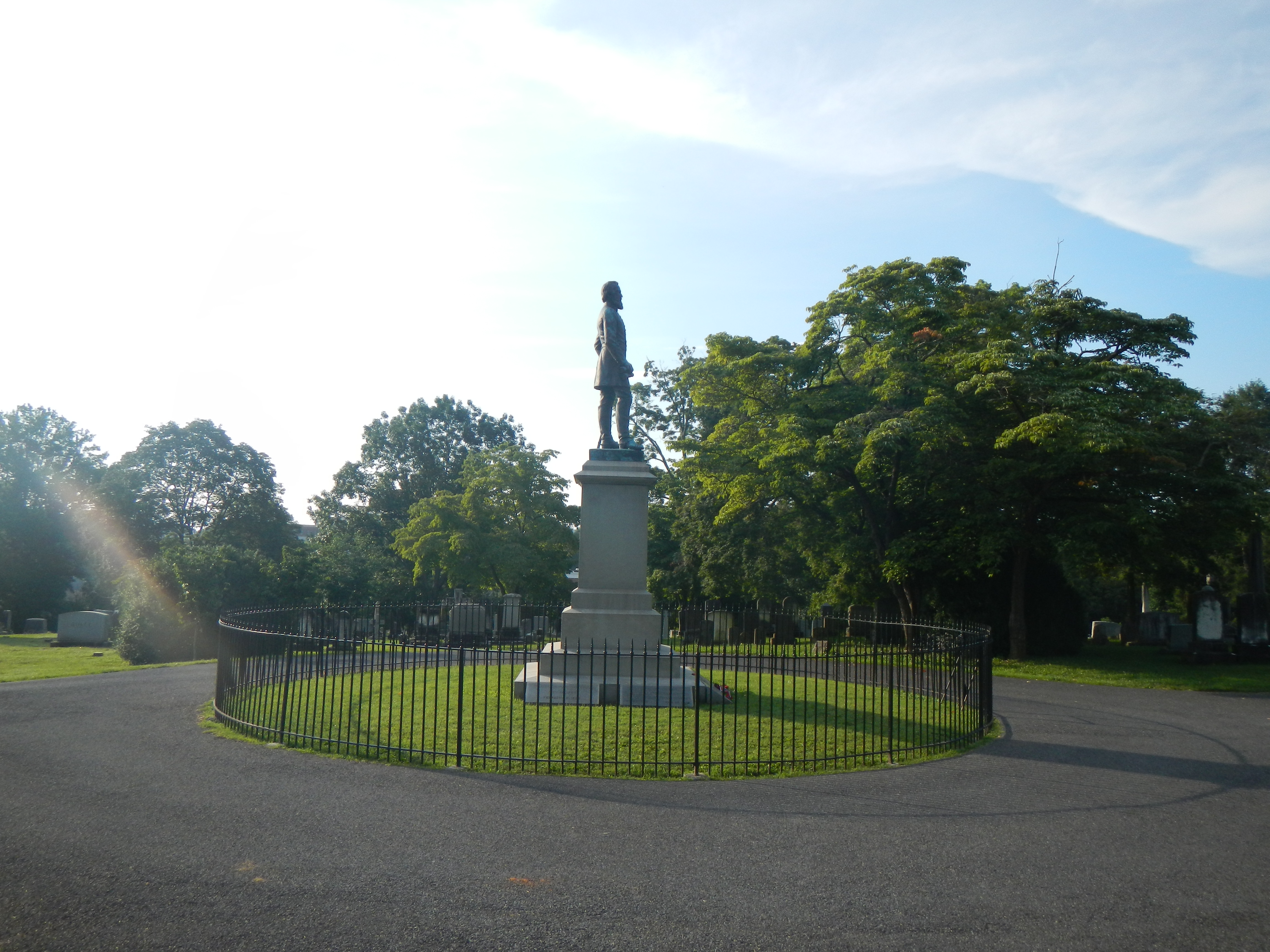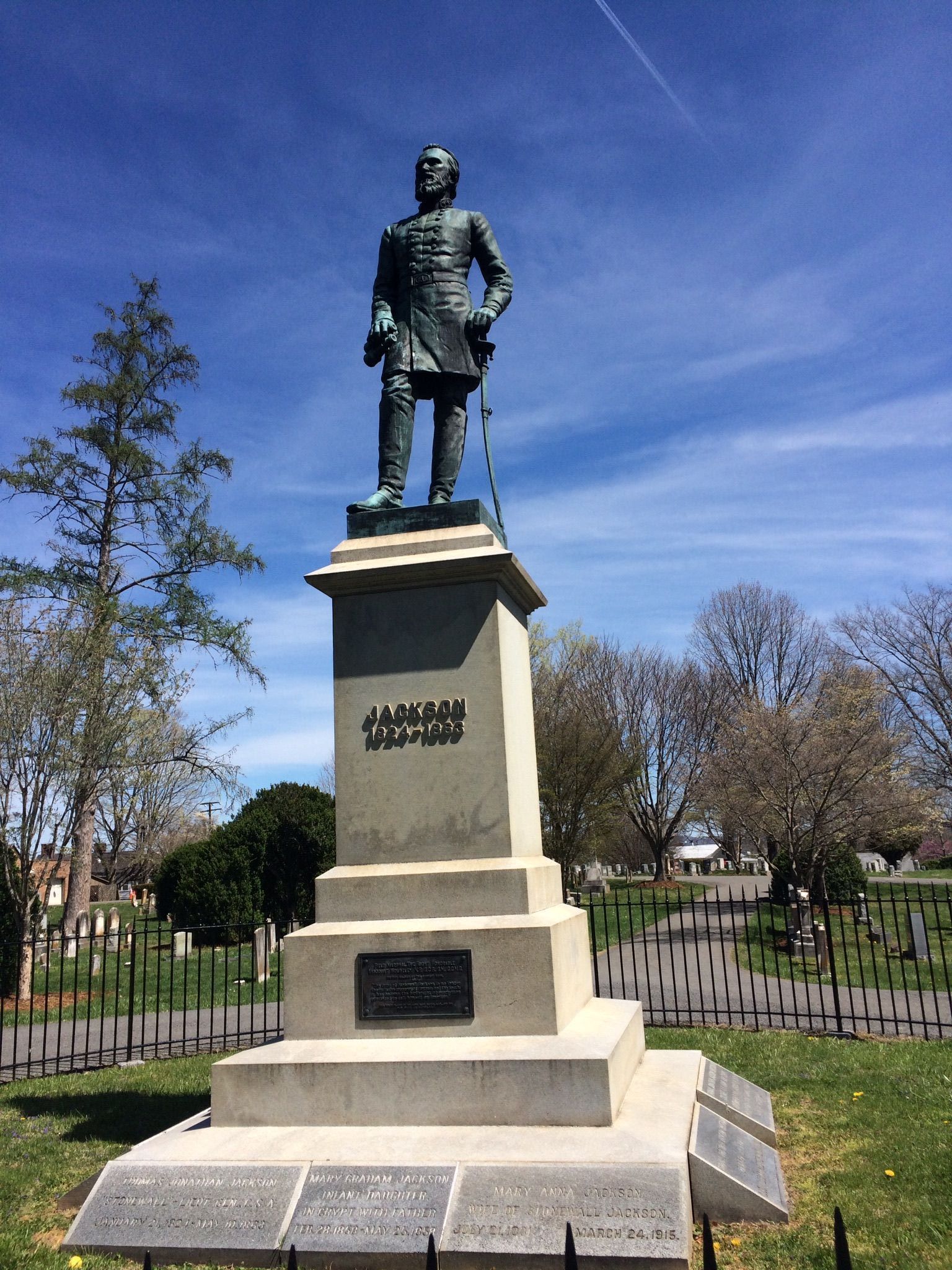Born in what is now the state of West Virginia in the town of Clarksburg to parents who, unable to secure medical attention, died as the result of extreme poverty. Orphaned, he was taken in and raised by an uncle.
Desiring an education, he applied to the United States Military Academy at West Point, New York, realizing that acceptance meant a free education. Though ill-prepared, he applied himself. His grades improved each year, resulting in his graduating in 1846, 17th in a class of 59.
He performed stellar service in the Mexican War, then resigned from the Army to accept a professorship at the Virginia Military Institute in Lexington, Virginia. His summer vacations from teaching were spent traveling to the North and in Europe where his interests were aroused in art and culture.
His peaceful life ended with the start of the Civil War. He was ordered to Richmond as part of the Cadet Corps. The South believed his experience as a teacher merited making him a Brigadier General. He did not disappoint. After receiving his nickname "Stonewall" at Bull Run because of his battlefield demeanor, he continually impressed the Confederacy with his skill on the battlefield, distinguishing himself in the Valley Campaign, the Battle of Second Manassas, and the Battle of Fredericksburg to become a Southern hero.
During the Battle of Chancellorsville, Jackson rode forward to scout with a party. As darkness descended, they returned in the direction of their lines coming upon Confederates who, mistaking them for Union combatants, opened fire, killing two staff members outright while three bullets struck General Jackson. He was transported 28 miles by horse ambulance to Chandler Plantation at Guinea Station to an outbuilding. His left arm was amputated at the shoulder. Recovery was unsuccessful, and he succumbed to fever and pneumonia after languishing for eight days with his wife by his bedside. His final words were "Let us cross over the river and rest in the shade of the trees."
His body was taken to Richmond, placed in a casket, and then transported by packet boat to the Virginia Military Institute where Cadets met and carried the remains to his old classroom where it lay in state. A battery fired salutes from sunrise to sunset. The body, enveloped in the Confederate Flag, was borne on a caisson to Lexington Presbyterian Church, the family church, for services, and then was buried in the family plot at Oak Grove Cemetery. The body was disinterred later and reburied beneath a statue in the cemetery center.
Much remains of the life of General Jackson: A granite monument marks the actual spot of his wounding and stands on the grounds of the Chancellorsville Battlefield Visitor Center. The office building where Jackson was taken has been restored and is part of the Fredericksburg and Spotsylvania National Military Park. Many items used during the General's stay are still there, and other pieces from the era, along with a few reproductions, recreate a scene reminiscent of the last days of his life.
The Stonewall Jackson House, located in Lexington, is the only home that was ever owned by the General and his wife. He lived in the house while he taught at V.M.I. It is on the National Register and furnished with period pieces including many of Jackson's personal possessions.
The V.M.I. Museum is the ultimate repository. It holds a large collection of his personal papers, images, and artifacts such as his favorite hat, two uniforms, the raincoat worn when he was shot, many items from the his former classroom, and, above all, his mounted steed Little Sorrel.
Born in what is now the state of West Virginia in the town of Clarksburg to parents who, unable to secure medical attention, died as the result of extreme poverty. Orphaned, he was taken in and raised by an uncle.
Desiring an education, he applied to the United States Military Academy at West Point, New York, realizing that acceptance meant a free education. Though ill-prepared, he applied himself. His grades improved each year, resulting in his graduating in 1846, 17th in a class of 59.
He performed stellar service in the Mexican War, then resigned from the Army to accept a professorship at the Virginia Military Institute in Lexington, Virginia. His summer vacations from teaching were spent traveling to the North and in Europe where his interests were aroused in art and culture.
His peaceful life ended with the start of the Civil War. He was ordered to Richmond as part of the Cadet Corps. The South believed his experience as a teacher merited making him a Brigadier General. He did not disappoint. After receiving his nickname "Stonewall" at Bull Run because of his battlefield demeanor, he continually impressed the Confederacy with his skill on the battlefield, distinguishing himself in the Valley Campaign, the Battle of Second Manassas, and the Battle of Fredericksburg to become a Southern hero.
During the Battle of Chancellorsville, Jackson rode forward to scout with a party. As darkness descended, they returned in the direction of their lines coming upon Confederates who, mistaking them for Union combatants, opened fire, killing two staff members outright while three bullets struck General Jackson. He was transported 28 miles by horse ambulance to Chandler Plantation at Guinea Station to an outbuilding. His left arm was amputated at the shoulder. Recovery was unsuccessful, and he succumbed to fever and pneumonia after languishing for eight days with his wife by his bedside. His final words were "Let us cross over the river and rest in the shade of the trees."
His body was taken to Richmond, placed in a casket, and then transported by packet boat to the Virginia Military Institute where Cadets met and carried the remains to his old classroom where it lay in state. A battery fired salutes from sunrise to sunset. The body, enveloped in the Confederate Flag, was borne on a caisson to Lexington Presbyterian Church, the family church, for services, and then was buried in the family plot at Oak Grove Cemetery. The body was disinterred later and reburied beneath a statue in the cemetery center.
Much remains of the life of General Jackson: A granite monument marks the actual spot of his wounding and stands on the grounds of the Chancellorsville Battlefield Visitor Center. The office building where Jackson was taken has been restored and is part of the Fredericksburg and Spotsylvania National Military Park. Many items used during the General's stay are still there, and other pieces from the era, along with a few reproductions, recreate a scene reminiscent of the last days of his life.
The Stonewall Jackson House, located in Lexington, is the only home that was ever owned by the General and his wife. He lived in the house while he taught at V.M.I. It is on the National Register and furnished with period pieces including many of Jackson's personal possessions.
The V.M.I. Museum is the ultimate repository. It holds a large collection of his personal papers, images, and artifacts such as his favorite hat, two uniforms, the raincoat worn when he was shot, many items from the his former classroom, and, above all, his mounted steed Little Sorrel.
Bio by: Donald Greyfield
Family Members
Advertisement
See more Jackson memorials in:
Explore more
Sponsored by Ancestry
Advertisement













